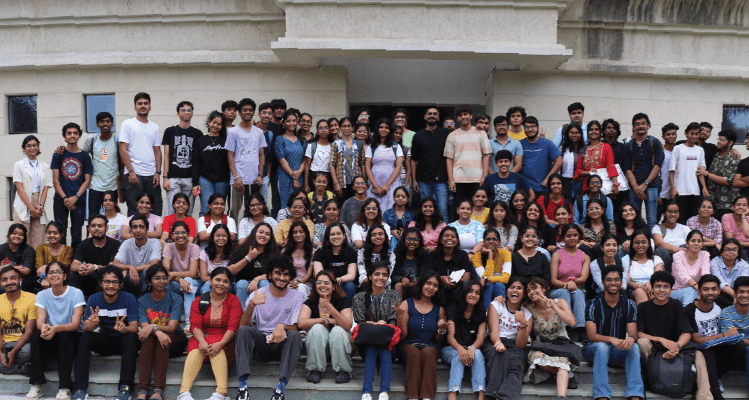Aspirants, a huge crowded market of uniquely talented individuals, so how do you make yourself stand out in this intricately diverse world? Your portfolio. All professions do not surely need it, but it is one of the ways for designers to stand out.
Your portfolio is about your identity, roles, skills, achievements, talent, and experiences. It is your story. Hailing from different backgrounds, all of us are exceptional, and so are our storylines, and so should be our portfolios-unique, diverse, and original.
Have you ever wondered which of the job experiences should you represent and which to not? How many projects should you ideally include in your portfolio? Well, our speaker, Sameer Chavan, has an answer to all such varied queries. Sameer is a passionate Industrial Designer, UX Strategist & Digital Experience Leader with 20 years of Industry experience. He has been a speaker at many UX conferences in India and abroad. He has UX patents and has also published many articles.
“It’s all about JD (job description),” says Sameer, “What are their expectations? There needs to be a certain kind of hierarchy in the portfolio hinged upon the requirement raised by the company.
From handwritten notes to sending personalized LinkedIn requests, everybody loves custom-design, or in other words, people appreciate content molded to suit their demands, and so do companies appreciate portfolios personalized to showcase relatable content. A healthcare company will be more interested in a healthcare app in your portfolio than a money transfer app.
But one must bear in mind that diversity is essential as well. Sameer says, “Showcasing internship works with a start-up, with an NGO or individual projects gives the recruiters an idea about your flexibility to work.”
When we traveled to the new city and got utterly lost trying to figure out a particular place, this became quite frustrating. Relatively, poorly structured portfolios become like those cramp confusing crossroads where the recruiters can’t relate your skills with the requirement. These make the structure of your portfolio an important aspect to consider and believe. A table of contents is a simple solution to the problem.
Out of the three to four projects put up, you can dive deep and explain one of them elaborately depending on the JD and give an overview of the other projects. However, the problem statement of the projects must be crisp and clear. A couple of hand-drawn sketches can be useful to show your hand skills.
The blazing sun overhead, a fog of honking vehicles all around--you need to feel this to understand the needs of a policeman. Only when you wear a green surgical gown with a scalpel in your hand and the life of a human. Can you truly understand the tension in the room and design accordingly? With the increasing popularity of this word empathy, it has become even more important to feel for the user either via shadowing or by putting yourself in the person’s shoes.
It is crucial to show your research and empathy mapping, to give credits to your co-team members, and to mention the source of information while paying attention to the Copyrights and NDA. Market size, production, and revenue can be the cherry on top of your work. And lastly, do not forget to include the key takeaways, challenges.
It is good to add various projects to show the breadth of your understanding but also important not to overcrowd your portfolio as quality is more important than quantity.
Esha Mehta
